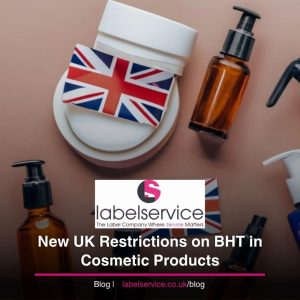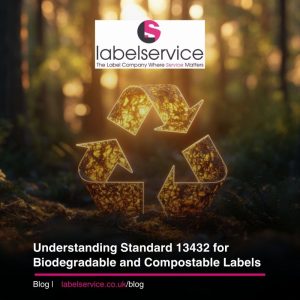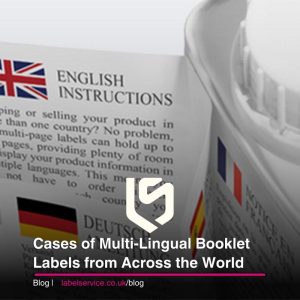The UKCA marking is the conformity marking used for products being placed on the market in Great Britain (England, Scotland and Wales). The UKCA regime has been operational since 1 January 2021 and, from this date, where a product is covered by the UKCA marking and meets the relevant requirements, you are able to place the UKCA marking on your product and then place the product on the GB market.
The UKCA marking applies to most products for which the CE marking can also be used. It also applies to aerosol dispensers and measuring container bottles, for which the reversed epsilon marking can also be used. The technical requirements (sometimes referred to as ‘essential requirements’) you must meet for the UKCA marking will depend on the product-specific legislation for your product.
By following designated standards, which the UK introduced to replace EU harmonised standards, there is a statutory ‘presumption of conformity’ that the product meets the essential requirements set out in the GB legislation that apply to that product covered by the standard.
The government has laid legislation to continue recognition of current EU requirements, including the CE marking (Conformité Européene, or European Conformity marking). The legislation will apply indefinitely for a range of product regulations. This means businesses will have the flexibility to use either the UKCA (UK Conformity Assessed) or CE marking to sell products in Great Britain (GB). Draft legislation can be found in The Product Safety and Metrology etc. (Amendment) Regulations 2024.
As part of this legislation, the government is also introducing a new fast-track provision that will allow manufacturers to place products on the GB market where they meet the EU essential requirements and, where required, have been conformity assessed by an EU-recognised conformity assessment body.
To benefit from this provision, manufacturers will need to affix the UKCA marking (in a way that is allowed) and draw up the UK declaration of conformity, listing compliance with the relevant EU legislation. This also means that where products fall within multiple regulations, a mixture of both UKCA and CE conformity assessment procedures can be used.
This is designed to provide longer-term certainty and flexibility for businesses in case the UK mandates UKCA for certain regulations in the future. Find out more about placing products on the market in Great Britain using UK or EU product markings (PDF, 345 KB, 9 pages).
Continued recognition of current EU requirements, including the CE and reversed epsilon markings, will apply to 21 product regulations. This will include the 18 product regulations owned by the Department for Business and Trade (DBT), previously announced on 1 August 2023. Following feedback from industry, we are also continuing recognition for a further 3 regulations, covering ecodesign, civil explosives and, in most circumstances, restriction of hazardous substances (in electrical equipment).
This announcement does not apply to regulations for medical devices, construction products, marine equipment, rail products, cableways, transportable pressure equipment and unmanned aircraft systems regulations. There are specific arrangements in place for these sectors. Separately, following feedback from businesses, the government also intends to bring forward an additional statutory instrument to legislate for further measures later in 2024.
This will provide permanent labelling flexibility, allowing:
- the UKCA marking to be placed on a sticky label or accompanying document
- importers of goods from any country outside the UK to provide their details either on the product itself, on an accompanying document, the packaging, or on an adhesive label; this means all businesses placing products on the GB market will benefit from this measure and have the option to provide their details either indelibly on the product itself, on an accompanying document, the packaging or on an adhesive label
- the voluntary option to use digital labelling; businesses will be able to apply the UKCA marking, manufacturer details and importer details digitally
Selling products in Great Britain
The UKCA marking is the conformity marking used for products being placed on the market in Great Britain (England, Scotland and Wales). The UKCA regime has been operational since 1 January 2021 and, from this date, where a product is covered by the UKCA marking and meets the relevant requirements, you are able to place the UKCA marking on your product and then place the product on the GB market.
The UKCA marking applies to most products for which the CE marking can also be used. It also applies to aerosol dispensers and measuring container bottles, for which the reversed epsilon marking can also be used. The technical requirements (sometimes referred to as ‘essential requirements’) you must meet for the UKCA marking will depend on the product-specific legislation for your product.
By following designated standards, which the UK introduced to replace EU harmonised standards, there is a statutory ‘presumption of conformity’ that the product meets the essential requirements set out in the GB legislation that apply to that product covered by the standard.
This presumption is rebuttable and, in most cases, using designated standards is voluntary, it is just one way of showing the product meets the essential requirements. In cases where an alternative technical solution is followed, you will have to provide more details in your technical documentation explaining how your products comply with the essential requirements.
Legislation is now in force which enables the UKCA marking to be placed on a label affixed to the product or on a document accompanying the product until 11pm on 31 December 2027. This measure applies to the following regulations:
- Aerosol Dispensers Regulations 2009
- Electrical Equipment (Safety) Regulations 2016
- Electromagnetic Compatibility Regulations 2016
- Explosives Regulations 2014
- Equipment and Protective Systems Intended for Use in Potentially Explosive Atmospheres Regulations 2016
- Lifts Regulations 2016
- Measuring Container Bottles (EEC Requirements) Regulations 1977
- Measuring Instruments Regulations 2016
- Noise Emission in the Environment by Equipment for use Outdoors Regulations 2001
- Non-automatic Weighing Instruments Regulations 2016
- Pyrotechnic Articles (Safety) Regulations 2015
- Radio Equipment Regulations 2017
- Recreational Craft Regulations 2017
- Regulation (EU) 2016/425 and the Personal Protective Equipment (Enforcement) Regulations 2018
- Simple Pressure Vessels (Safety) Regulations 2016
- Supply of Machinery (Safety) Regulations 2008
- The Pressure Equipment (Safety) Regulations 2016
- The Restriction of the Use of Certain Hazardous Substances in Electrical and Electronic Equipment Regulations 2012
- Toys (Safety) Regulations 2011
Where to place the UKCA marking
Legislation is now in force which enables the UKCA marking to be placed on a label affixed to the product or on a document accompanying the product until 11pm on 31 December 2027. This means that as of 1 January 2028, in most cases, you must affix the UKCA marking to the product itself or to the packaging. The government intends to introduce legislation to allow the UKCA marking to be affixed in more flexible ways. Additional details for this measure will be provided in due course, including which regulations it will apply to.
In some cases, for example, where the product is too small, the UKCA marking can be affixed to the data plate, packaging, a label affixed to the product or accompanying documentation. Please consult the sector-specific legislation that applies to your products for more information.
The UKCA marking must be clearly visible, legible and indelible when you affix it to the product (or permitted alternatives). There are also rules about the size and dimensions of the UKCA marking. See the rules for using the UKCA image.
UKCA markings must only be placed on a product by you as the manufacturer, your authorised representative (where permitted in the relevant legislation), or if you are marketing the products under your name or trademark (for example, where you will take the responsibilities of the manufacturer, including affixing the UKCA marking). When affixing the UKCA marking, you take full responsibility for conformity with the requirements of the relevant UK legislation.
You must not place any marking, sign or inscription which is likely to mislead any other person as to the meaning or form of the UKCA marking or affix any marking which would impair the visibility, legibility and meaning of the UKCA marking. The UKCA marking cannot be placed on products unless there is a specific requirement to do so in the legislation.
Accompanying documents
What form your accompanying document should take and how long it needs to be kept for depends on the product’s specific circumstances. For example, if a product is transferred in the course of a commercial activity (in a business-to-business or business-to-consumer transaction), the business supplying the product will be obliged to verify that the product bears the UKCA marking, in accordance with the relevant legislation.
It is the responsibility of the manufacturer to ensure that the technical documentation and other records relating to conformity assessment procedures are prepared in (or translated to) English regardless of whether the product is UKCA or CE marked. They must also provide the following (in English) with the product itself or as a batch:
- the UKCA marking (if legislation permits the marking to be on an accompanying document)
- the UK Declaration of Conformity, if UKCA marking the product
- the EU Declaration of Conformity, if CE marking the product
- all relevant product instructions and safety information as the legislation requires
It is the responsibility of the importer to ensure the manufacturer has:
- drawn up the relevant technical documentation and instructions for use in English
- affixed the relevant conformity marking
- fulfilled their identification obligations of including their name and address in line with relevant guidelines
Each individual product will not necessarily need an accompanying document if moving through the supply chain as a batch. For example, when 1,000 units are moving from distributor A to distributor B, one accompanying document should be sufficient if the information that must accompany the UKCA marking applies to all the units.
However, if distributor B were to then break the units up and supply them to separate distributors C, D, and E, each of these batches would need to be accompanied by the documents outlined above. This principle continues to apply as the units move through the supply chain towards the end user.
The UKCA marking can take different forms (for example, the colour does not have to be solid), as long as it remains visible, legible and maintains the required proportions.

















